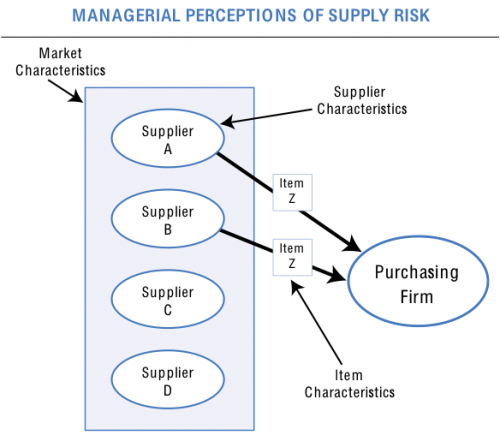Perception of Supply Risk
One of the most published supply risk researchers is George A. Zsidisin. In his 2003 article he describes the characteristics of inbound supply that affect the perception of risk.
Supply Risk
The author defines supply risk as
the potential occurrence of an incident associated with inbound supply from individual supplier failures or the supply market, in which its outcomes result in the inability of the purchasing firm to meet customer demand or cause threats to customer life and safety.
He therefore includes the probability and significance of an adverse event.
Methodology
With the above mentioned definition and a literature review as a basis Zsidisin establishes a case study with seven companies from different industries (Aerospace, Computer, Electronics, Semiconductor).
The data from these sample companies is then analyzed and common patterns are revealed using open and axial coding analysis.
Findings
Three categories which affect risk perception are found (see figure below): item(/product)- , market- and supplier-characteristics.
The influences are pretty straight forward. Examples:
- Item Characteristics: new products have a higher perceived risk than existing products
- Market Characteristics: unstable marked prices lead to a higher perceived risk
- Market Characteristics: the lower the number of qualified suppliers the higher the perceived risk
- Supplier Characteristics: low quality levels with suppliers lead to higher perceived risk

Conclusion
The proposed categories can be used by supply professionals who are assessing their risks. Caveat: The findings have been generated using case study research the framework therefore cannot guarantee theoretical completeness.
Zsidisin, G. (2003). Managerial Perceptions of Supply Risk The Journal of Supply Chain Management, 39 (1), 14-26 DOI: 10.1111/j.1745-493X.2003.tb00146.x








Add new comment